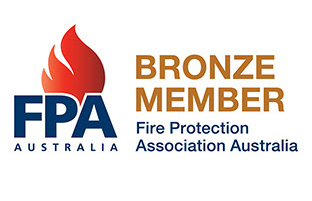BLOG
June 16, 2025
Fire safety is an essential aspect of every workplace and residential property, and one of the most important elements in a fire safety system is the fire extinguisher. To ensure that your fire extinguishers are always in working condition, regular fire extinguisher testing is required. This professional service helps maintain the functionality of your fire extinguishers, ensuring they are ready to use in case of an emergency.
In this blog, we will walk you through the key elements of a fire extinguisher testing inspection, explaining what happens during the process, and why it’s crucial for compliance with fire safety regulations.
Fire extinguishers are life-saving devices that can prevent small fires from escalating into major disasters. However, over time, fire extinguishers may lose pressure, get damaged, or require maintenance to ensure they are functioning properly. Regular fire extinguisher testing ensures that the equipment is up to standard and can perform its job when needed most.
Moreover, it’s important to note that businesses and property owners are legally required to maintain their fire extinguishers and ensure they are regularly inspected. In Australia, fire extinguisher maintenance and testing are part of compliance with the Workplace Health and Safety regulations, as well as fire safety compliance standards.
When you schedule a fire extinguisher testing service, a qualified fire safety professional will perform a thorough inspection and test. Here’s what typically happens during an inspection:
The first step in fire extinguisher testing is a visual inspection. During this phase, the technician checks for obvious signs of damage, wear, or corrosion on the fire extinguisher. A visual inspection includes:
A critical aspect of fire extinguisher testing is checking the pressure. If the pressure inside the fire extinguisher is too low, it may not work correctly in an emergency. Conversely, if the pressure is too high, it could lead to an accidental discharge or failure.
The technician will use a pressure gauge to verify that the extinguisher’s pressure is within the recommended range. If the pressure is incorrect, the technician will recharge or replace the fire extinguisher to ensure it’s ready for use.
Fire extinguishers rely on a specific amount of pressurised substance to function effectively. During fire extinguisher testing, the technician will weigh the fire extinguisher to ensure it is still filled to the correct capacity. If the weight is too low, this could indicate that some of the contents have leaked out over time.
The pin and safety seal on a fire extinguisher are crucial for ensuring that the device is not tampered with. During the inspection, the technician will check that the pin is securely in place and that the safety seal is intact. If the pin or seal is missing, the fire extinguisher will not function properly, and it may need to be serviced or replaced.
For certain types of fire extinguishers, a technician may perform a controlled test discharge to ensure that the extinguisher is in working order. This is usually done for larger or more specialised extinguishers, such as CO2 or foam types. This test is essential for ensuring that the extinguisher can effectively release its contents when required.
If any issues are identified during the inspection—whether it’s low pressure, leaks, or damage to the extinguisher—the technician will either recharge the extinguisher or recommend a replacement. Recharging involves refilling the extinguisher with the appropriate fire-suppressant material and re-pressurising it.
If the extinguisher is damaged beyond repair or has reached the end of its lifespan, it will need to be replaced. A technician will recommend a suitable replacement to ensure continued fire safety.
In Australia, the Occupational Health and Safety Act (OH&S) requires that businesses maintain their fire extinguishers and have them tested regularly. Compliance with fire extinguisher testing regulations is not only essential for fire safety but also for maintaining your legal obligations as a business owner or property manager.
The regulations stipulate that fire extinguishers must be inspected annually, with testing being performed at least once every 6 months for certain types. Regular maintenance ensures that your fire extinguishers are operational and compliant with safety standards.
The frequency of fire extinguisher testing depends on the type of fire extinguisher and the environment in which it is used. As a general guideline:
It’s essential to keep track of your fire extinguisher testing schedule to ensure compliance and safety. You can easily organise regular tests with a professional service like Brisbane Fire Services, which offers comprehensive maintenance and testing services for both residential and commercial properties.
At Brisbane Fire Services, we are committed to providing reliable, professional fire extinguisher testing and servicing to ensure your property remains compliant with fire safety regulations. Our team of qualified experts carries out thorough inspections and recharging, ensuring your fire extinguishers are always ready to use when you need them most.
Our services include:
For more information or to book your fire extinguisher testing service, please contact us today.
Regular fire extinguisher testing is essential for maintaining a safe environment, whether it’s at home or in a business. Inspections help ensure that your fire extinguishers are fully operational and ready to use in case of an emergency. By scheduling regular testing with a professional service, you’re taking a proactive step towards ensuring the safety and compliance of your property.
Don’t wait until it’s too late—ensure your fire extinguishers are always in top condition by arranging a fire extinguisher testing service today.
For a detailed inspection or to get a quote for fire extinguisher testing, visit our quote page.

Services
Quick Links
Contact Us